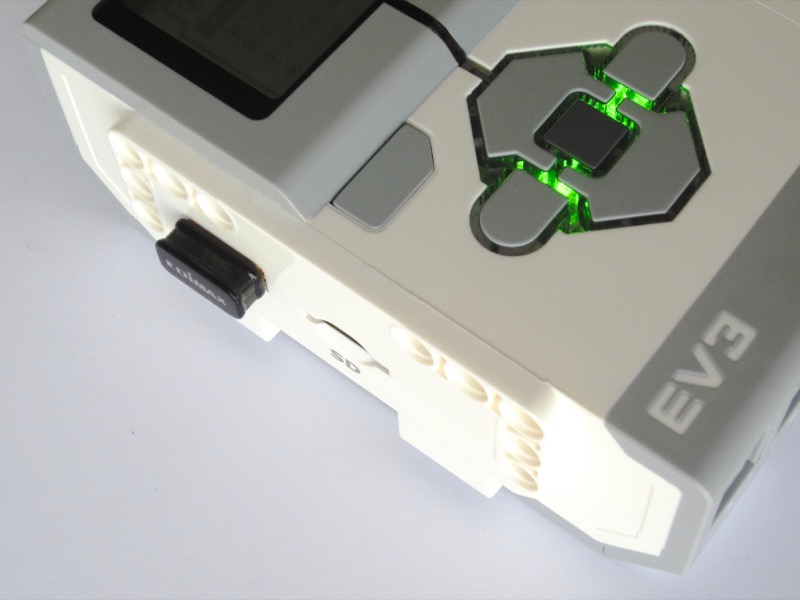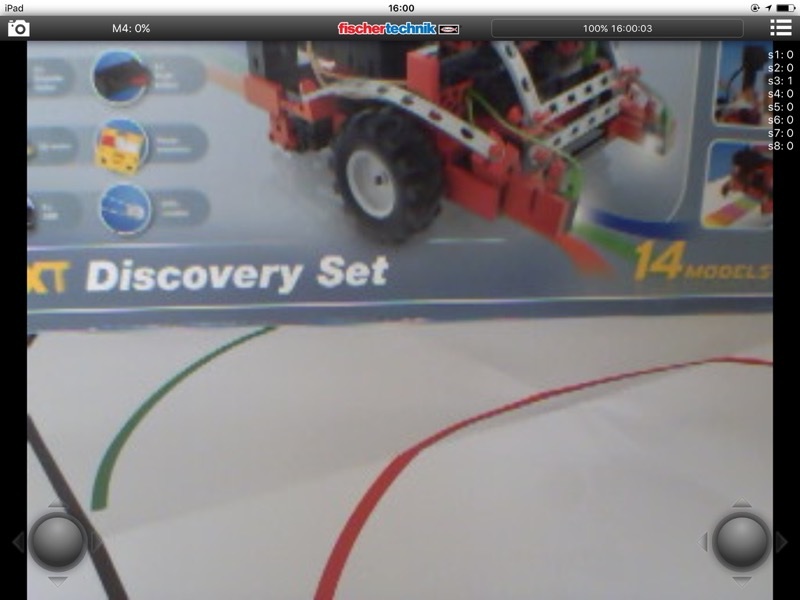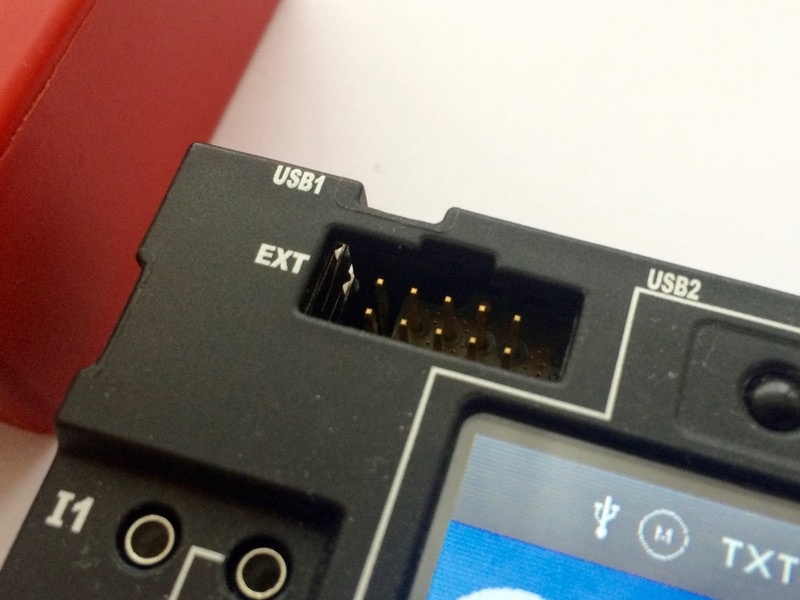Connecting
|
Both the Lego EV3 and the fischertechnik Robotics TXT offers multiples ways for connecting the controller to the computer.
|
USB
|
Lego provides a USB cable. This option is the fastest and most stable.
|
fischertechnik provides a USB cable. This option is the fastest and most stable.
|
Bluetooth
|
The EV3 includes a Bluetooth radio. This is a great option for low power. Configuration was easy and connections were successful at first try.
|
The Robotics TXT includes a Bluetooth radio. This is a great option for low power. The TXT displays the pairing code for an easy configuration.
However, if connections were successful at first try, RoboPro failed to connect and upload the project. Similarly, Bluetooth connection between the Robotics TXT and the former RoboTX hasn't been implemented yet. Update Updated drivers have improved Bluetooth reliability. |
WiFi
|
The EV3 doesn't include the WiFi radio and requires an external dongle. The Edimax dongle (already tested on the BeagleBone and Raspberry Pi) worked on the first try.
The WiFi operates in client mode. Configuration was easy with a list of available RSSI and a simulated keyboard to enter the passcode. Connections were successful at first try. |
The Robotics TXT includes a WiFi radio. However, it only features the Access Point (AP) mode. I guess the reason is about security. I'd like to see the WiFi client mode implemented.
Update The controller now features standard WiFi client mode. Configuration was easy and connections were successful at first try. |
|
However, the USB slot for the dongle isn't well placed. This may cause issues with models if they need a flat surface on the left side of the EV3 brick.
|
The bandwidth is fast enough for a live video feed with the iOS and Android application.
|
Serial
|
The Lego EV3 doesn't have an expansion port.
|
The 10-pin expansion port of the Robotics TXT includes an I²C bus and a Serial port. Connecting a 3.3 V FTDI cable displays a console with debugging information.
Please refer to How to connect an I²C Device to the Robotics TXT? for the pin-out. |
Conclusion
|
I like the ease of configuration and the stability of the Bluetooth and WiFi connections on the Lego EV3, albeit the later as an option. The external dongle may rise issues with models.
The fischertechnik Robotics TXT offers more options, but needs some development for a better stability and compatibility with former RobotTX. I'd like to see the WiFi client mode implemented. Similarly, the Serial interface is interesting should the firmware be better documented. Update The fischertechnik Robotics TXT controller now features standard WiFi client mode. |
Previous |
Next |





